The power factor of the crossbow has increased significantly over the centuries. The slow increase in draw weights rendered more power, meaning more distance and impact on your target.
As power increased, pulling back on the crossbow string became difficult. That’s why we see different types of cocking aids today.
You can experience accuracy problems if you shoot with an improperly cocked crossbow. Knowing the right technique for cocking a crossbow will help you be more consistent and accurate with the bolt flight.
Let’s explore everything you need to know about how to cock a crossbow in our in-depth guide below. We’ll start with the different steps required to uncock, shoot, and cock your crossbow.
Cocking vs Shooting vs Uncocking
Uncocking your crossbow
- To uncock a crossbow, the bow should already be in the cocked position without the bolt. Your foot needs to sit securely into the foot claw.
- Take the crossbow’s grip and get into a firing position with one hand.
- Do not pull the trigger. Instead, take hold of the string and raise it with your spare hand.
- Use your legs to get into a slight squat position.
- Raise the string with one hand, then use your other to fire the bow.
- Slowly let the string down but keep your muscles tense until the lower string is in the bottommost position.
Cocking crossbows
- First, put the safety switch into the firing position. You can find this either on the bride’s rear or at the bow’s side.
- Place your foot into the cocking stirrup; this will help to avoid slipping when you are cocking
- Now pull the string back by leaning over the stock and drawing the string back.
- Make sure you draw the string evenly on either side of your bow’s barrel to the safety and latching mechanism until it is cocked in position.
- Once your crossbow is cocked, you can take it off the firing position.
- Some models will do this automatically, so check this before cocking a crossbow.
Shooting your crossbow
- Ensure the bow is cocked and ready to shoot
- Get the feather end of the arrow and place it down into the track
- Move the arrow against the string under the retention spring
- The nock needs to be aligned correctly
- Bring the crossbow towards your shoulder and get your sight aligned on the target
- Release your safety feature and then squeeze the trigger
What Makes a Crossbow So Difficult to Cock?
How easy it is to pull will depend on the length of the bow. Long crossbows offer more power than shorter ones.
The shape will contribute to the spring force of the bow and how easy you find it is to pull it back. The supplies used and their strength can affect the pullback of the bow due to the tensile strength and density.
Manually Cocking a Crossbow
Your whole body’s muscles will be required if you draw a bow manually using your hands. You’ll need a lot of upper-body strength if you want to be successful.
Here’s how to pull the string back on a crossbow manually
Steps
1. Place the stirrup of the bow on the ground. Put your foot in the stirrup so it doesn’t fall over.
2. Now lean over the stock until you can comfortably get to the string on the opposite side of it.
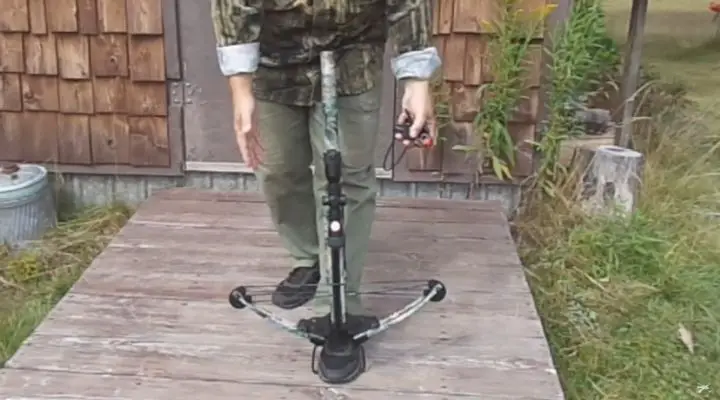
3. With both hands, grab the string and raise it toward your upper body until it comes into contact with the clasp.
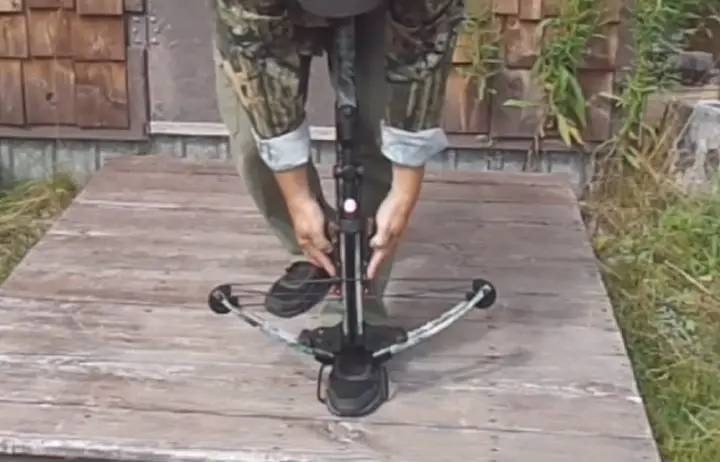
4. To prevent the rope from being unevenly lodged in the mechanism, bring it back across the barrel in a straight line. It’s also conceivable that your arrows will end up pointing in the opposite direction of where you intended them to be.
5. In the worst-case scenario, you might end up hurting yourself or someone else nearby. So, make sure that the string is exactly aligned, and then keep a look around to ensure everyone’s safety.
Pros of using your hands
- Pulling back a crossbow by hand is an exercise for building and strengthening the arms, shoulders, and back muscles
- Easy to use and requires less strength than using a pulley, it can make it perfect for the beginners
Cons of using your hands
- Pulling back a bow using your hands can cause injury to the archer or someone else around
- More time-consuming and requires a stationary position while pulling the string back
How To Cock A Crossbow With a Rope Cocking Device
This section will look at the first way, a rope cocking device for crossbows that uses a pulley system.
When you adjust your bow, the size of your bow is essential. Even though relatively simple to implement, this is a remarkably effective technique because of the use of rope cocking gear.
You will only have to exert half the effort you usually do.
Steps
1. Start in the same posture as you did for the by-hand approach, with your crossbow resting on the floor and the prod facing down. Ensure your foot is securely in the stirrup to keep the crossbow stable.
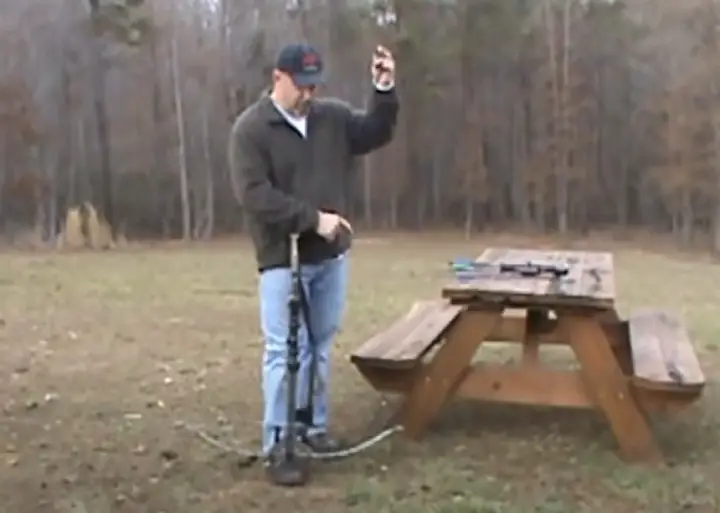
2. Grab the cocking system by hand and place the center of the rope into the notch at the rear of the stock. Make sure that the hooks are pointing away from you.
This will allow the rope to be cocked easily.
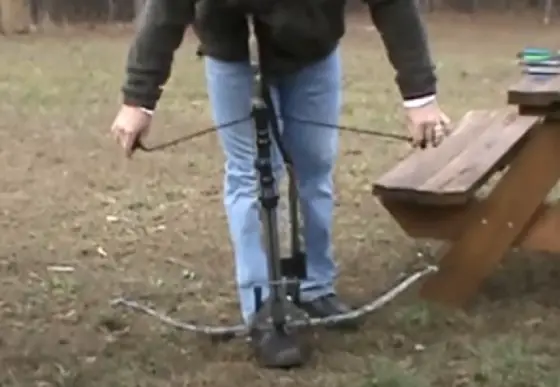
3. Put the hooks onto each side of the string on the firing rail, as near to it as feasible. This helps keep the crossbow steady.
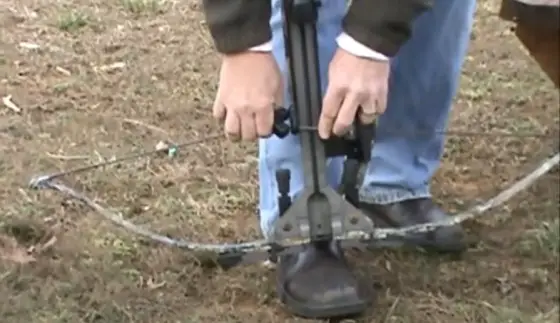
4. With a firm grip on the cocking harness’s handles, pull the harness up and away from you. Repeat this motion as you gently rise and return to an upright posture.
5. Once the string is completely pulled back, you’ll feel or hear a click. This means it has been secured into the triggered mechanism.
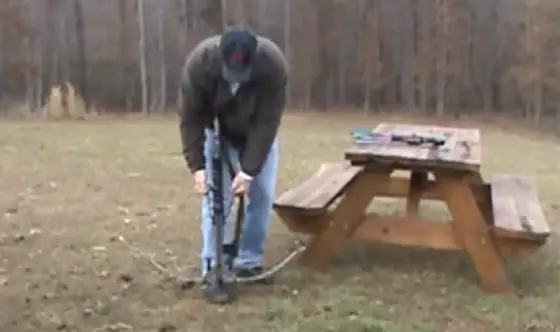
Pros of using ropes
- Rope is cheaper than other tools used for cocking a crossbow
- It may be easier to transport a bow with a shorter-length bowstring
- Some compound crossbows have an integrated mechanism for drawing them using ropes instead of using arms to pull back the string
Cons of using ropes
- A rope is more likely to break while being pulled back
Using a Cranking Device
You may also employ a cranking mechanism to make it easier to draw back a crossbow. Some crossbows have a completely integrated crank mechanism included in the bow’s design.
When not in use, you can purchase after-market attachments that can be attached to the stock and removed later.
As a standard feature, many professional crossbows include a crank cocking system that may be removed to minimize firing impediments.
Cranking mechanisms are the best way to cock a crossbow since they are precise. In addition, they cut the work required by as much as 90% in certain circumstances.
Steps
1. Attach the crank to the end of the arrow. First, insert a string into the groove on top of the crank, then slide it down to rest on both sides of the notch.
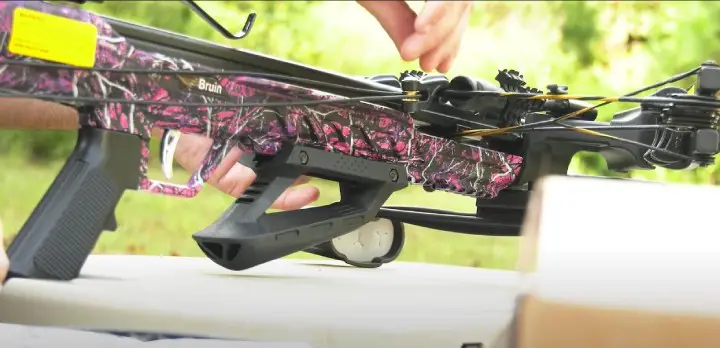
2. Position yourself so that you are facing away from your target.
3. Hold onto one side of the notched crank with one hand and hold onto your crossbow with your other hand
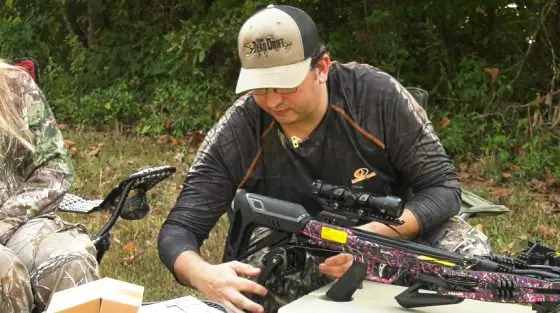
4. Drawback
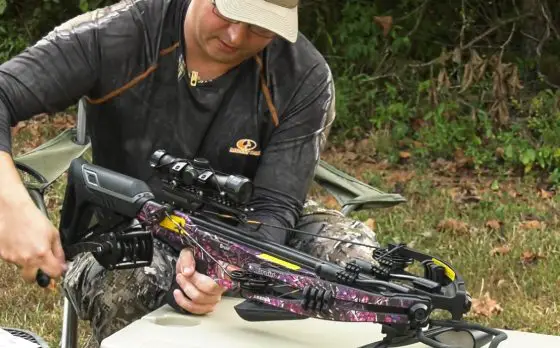
Pros of a Crank Device
- Crossbows can be shot with less physical effort because they use a crank to pull back the string rather than you do so manually.
- It is faster, easier, and more accurate than using the traditional rope pull
Cons of a crank device
- The crank mechanism can be difficult to operate because it needs to be turned in two directions at once – clockwise and counter-clockwise (or vice versa)
- It requires more work because you’ll have to turn the crank after each shot.
Tips for Cocking a Crossbow
Avoid a Long Recurve Crossbow
A long recurve crossbow doesn’t have a cocking mechanism that helps you draw easily. Your physical strength will be required to cock it.
Marking The String
Whether you cock using a device or manually, you need to ensure care is taken to keep the string evenly centered each time. Mark the string with a pen or pencil on the rail sides to use this as a visual cue for centering the string.
Point the Crossbow in a Safe Direction
Try to keep the front end of the crossbow pointed down and in a safe direction when cocking. Even if you don’t have an arrow in the bow, follow this safety precaution to avoid an accidental dry fire.
Things to Avoid When Cocking A Crossbow
Avoid Relying on Your Dominant Arm
Your serving can be off when you are cocking if you rely on your dominant arm too much. Using your dominant arm, you can pull the string faster and put the bow off balance.
Dry Firing Will Damage Your Crossbow
Don’t dry fire the crossbow if you are only practicing how to cock it. Dry firing will nearly guarantee extreme damage to the bow.
Also, if you have nothing to absorb the force when the bow is released, such as a rope, then the crossbow itself is going to take all the negative energy.
How Do You Uncock a Crossbow
Unloading the Bolt
To use an unloading bolt, you will first need to remove the arrow currently in place and change the bolt over to an unloading bolt.
Now fire the bow and aim it towards the ground between six and ten feet away. Ensure the ground is not hard and rocky. This sounds similar to a discharge bolt, but you lose a bolt slot in the quiver with that process.
Crossbow Defuser
To uncock a crossbow using the defuser method, you need to install the defuser to the crossbow. This process will be different for each model. Refer to your manual for instructions.
Once you have your diffuser installed, you need to turn the knob on the diffuser, and the limbs will return to the default position.
FAQs
Is It a Bad Idea to Uncock a Crossbow by Hand?
Modern crossbows are built tough. Uncocking by hand puts you at risk of injury to the chest, stomach, back, and hands.
Should the Safety Be off When Cocking a Crossbow?
No, Of Course not! Like any other shooting weapon, crossbows can pose a serious threat to everyone around. It’s imperative to keep the safety on until you are in the shooting position, and ready to fire. Even if the bow is unloaded, it’s a safe practice to keep the front end of a crossbow pointed downwards, especially if that bow is cocked.
Where Should I Zero My Crossbow?
Is It Ok to Dry Fire a Crossbow?
No. Dry firing (shooting without loading an arrow) can damage the bow’s assembly and structural integrity. That’s why modern crossbows are equipped with a mechanism named DFI (Dry Fire Inhibitor). It catches the string when you attempt to dry fire your crossbow.

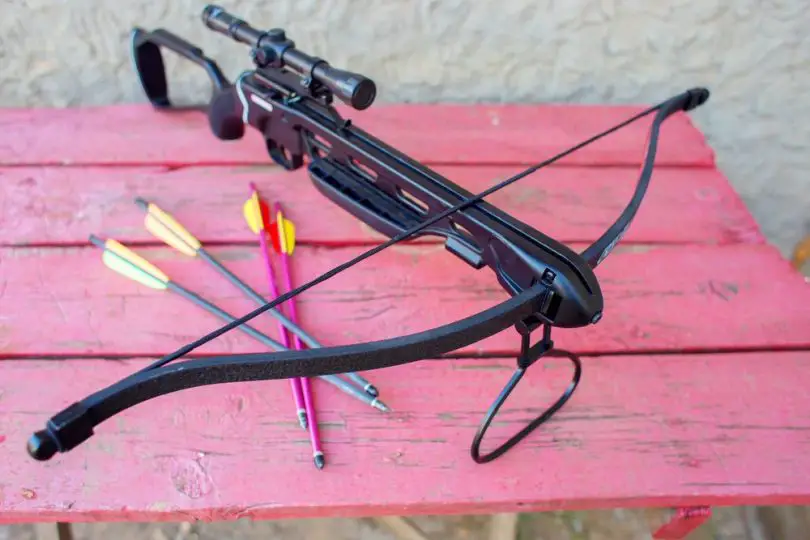




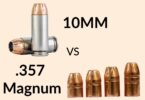


Leave a Comment